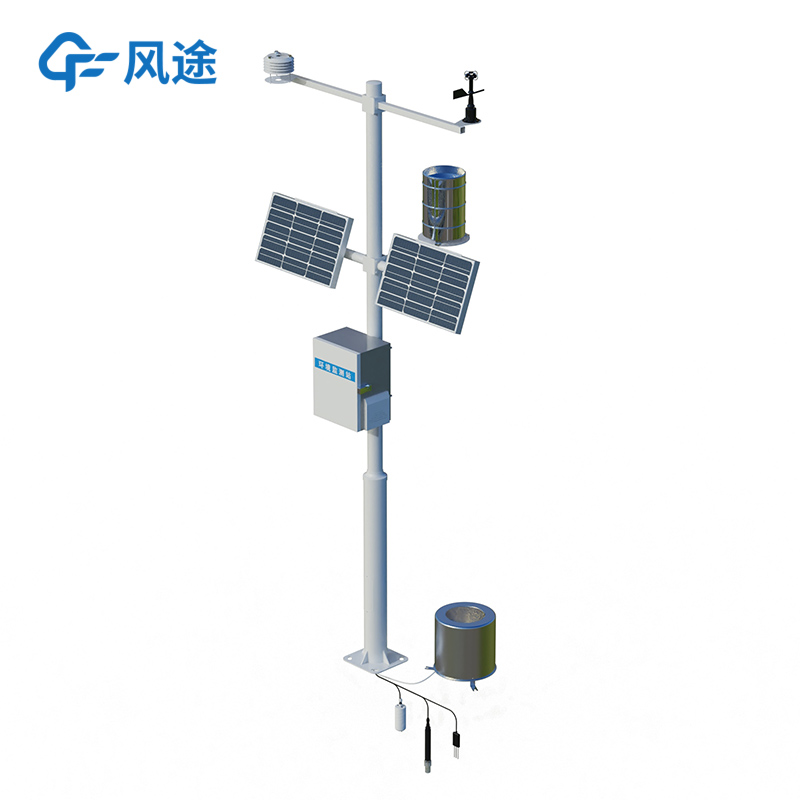Tianyi Sensor IOT Technology Co., Ltd
Sales Manager:Ms. Emily Wang
Cel,Whatsapp,Wechat:+86 15898932201
Email:info@fengtutec.com
Add:No. 155 Optoelectronic Industry Accelerator, Gaoxin District, Weifang, Shandong, China

Sales Manager:Ms. Emily Wang
Cel,Whatsapp,Wechat:+86 15898932201
Email:info@fengtutec.com
Add:No. 155 Optoelectronic Industry Accelerator, Gaoxin District, Weifang, Shandong, China
time:2025-04-16 10:18:47 source:Weather Station viewed:179 time
Under the general trend of technology empowering agriculture, Agricultural meteorological stations are gradually becoming key facilities for ensuring agricultural production and promoting the modernization of agriculture.
It can conduct real-time and precise monitoring of various meteorological environmental factors, covering elements such as ambient temperature, ambient humidity, wind speed, wind direction, air pressure, illuminance, rainfall, soil moisture, carbon dioxide concentration, soil temperature, and solar ultraviolet radiation. Through a highly integrated design, a single monitoring station can automatically collect data on the terrestrial ecological environment and numerous meteorological elements, greatly improving the monitoring efficiency. It avoids the cumbersome operations associated with the traditional single-unit monitoring method, in which multiple single-function instruments (such as soil temperature and humidity tachometers, rainfall recorders, etc.) need to be used.
It has a high protection level. For example, the rainproof design with an IP65 protection level can effectively resist the intrusion of rainy weather. Each of its sensors not only responds quickly but also can operate stably for a long time in harsh environments, ensuring high measurement accuracy, large storage capacity, continuous monitoring, stable performance, high reliability, and relatively convenient maintenance.
The main unit has diverse functions. It can not only display the collected data in real time but also flexibly set the time intervals for data storage and transmission. It supports a modular design. Users can arbitrarily configure the sensors through the main unit menu according to their actual needs. It can be connected to various types of sensors and offers two options: the network GPRS mode or the SMS GSM mode. The data can be uploaded to the computer specified by the user or transmitted to the general server, and the two can be freely switched without interfering with each other. It also has the function of remote SMS setting. Users can remotely complete the setting of parameters such as the data collection time interval, storage time interval, and IP address through SMS without having to operate on-site. This convenient function greatly improves the flexibility of equipment management.
The application of Agricultural meteorological stations in the agricultural field runs through the entire cycle of agricultural production. In the stage of crop planting planning, by accumulating and analyzing the meteorological data and soil condition data collected by the monitoring stations over a long period, agricultural practitioners can gain an in-depth understanding of the spatial and temporal distribution patterns of local agricultural natural resources, thus providing a scientific basis for agricultural zoning and planning as well as the rational layout of crops. For example, based on data such as illuminance, temperature, and soil pH, it is possible to determine which areas are suitable for growing light-loving crops and which areas are suitable for growing shade-loving crops, ensuring that crops grow in the most suitable environment and improving the yield and quality of crops from the source.

When it comes to anemometers, the most classic Mechanical anemometer immediately comes to mind. It realizes the measurement of wind speed and direction through mechanical structures and physical principles, and its classic nature stems from a mature technical system and extensive application practic...
The core of the Odor Online Monitor lies in simulating human olfactory perception, enabling simultaneous monitoring of multiple malodorous pollutants. It is particularly suitable for 24/7 continuous monitoring in environments such as landfill sites, chemical industrial parks, and wastewater treatmen...
A Portable Weather Station is a device that can be carried around and automatically complete meteorological data collection, mainly used for meteorological monitoring in field, emergency and other scenarios. It integrates the core functions of traditional weather stations in a compact structure, and...
Debris flow is a common sudden geological disaster in mountainous areas. Triggered by heavy rains and melting snow and ice, it carries a large amount of solid materials such as sediment and rocks, flowing rapidly with strong impact force and a wide range of destruction. It often causes severe damage...